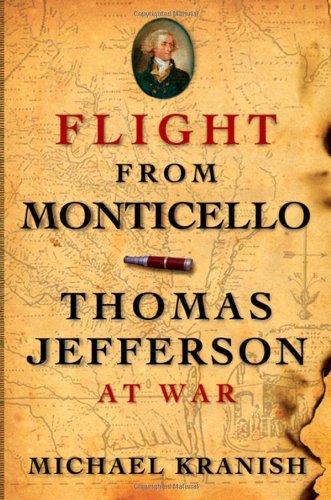Description
When Thomas Jefferson wrote his epitaph, he listed as his accomplishments his authorship of the Declaration of Independence and the Virginia statute of religious freedom, and his founding of the University of Virginia. He did not mention his presidency or that he used to be second governor of the state of Virginia, in the most trying hours of the Revolution. Dumas Malone, writer of the epic six-volume biography, wrote that the events of this time provide an explanation for Jefferson’s “character as a man of action in a serious emergency.” Joseph Ellis, writer of American Sphinx, specializes in other parts of Jefferson’s life but wrote that his actions as governor “toughened him on the inside.” It is this period, when Jefferson used to be literally tested under fire, that Michael Kranish illuminates in Flight from Monticello.
Filled with vivid, precisely observed scenes, this book is a sweeping narrative of clashing armies–of spies, intrigue, desperate moments, and harrowing battles. The story opens with the first murmurs of resistance to Britain, as the colonies struggled under an onerous tax burden and colonial leaders–including Jefferson–fomented opposition to British rule. Kranish captures the tumultuous outbreak of war, the local politics in the back of Jefferson’s actions in the Continental Congress (and his famous Declaration), and his rise to the governorship. Jefferson’s life-long belief in the corrupting influence of a powerful executive led him to advocate for a weak governorship, one that lacked the necessary powers to raise an army. Thus, Virginia used to be woefully unprepared for the invading British troops who sailed up the James under the direction of a recently turned Benedict Arnold. Facing rag-tag resistance, the British force took the colony with very little trouble. The legislature fled the capital, and Jefferson himself narrowly eluded capture twice.
Kranish describes Jefferson’s many stumbles as he struggled to answer the invasion, and along the way, the writer paints an intimate portrait of Jefferson, illuminating his quiet conversations, his circle of relatives turmoil, and his private hours at Monticello. “Jefferson’s record used to be both remarkable and unsatisfactory, filled with contradictions,” writes Kranish. As a revolutionary leader who felt he used to be unqualified to conduct a war, Jefferson never resolved those contradictions–but, as Kranish shows, he did learn lessons all through those dark hours that served him all his life.
Take a look at pictures from Flight from Monticello
(Click on images to enlarge)

Thomas Jefferson by John Trumbull, from life, 1787-1788. |
 Jefferson’s diary entry for June 4, the day he fled Monticello just before the enemy arrived, says, “British horse came to Monticello.” Courtesy of the Library of Congress. |

View from Monticello, having a look toward Charlottesville, 1827, by Jane Pitford Braddick Peticolas. |
 Thomas Jefferson’s sketch of the first version of Monticello. Jefferson used to be in the course of building this early iteration of his mansion when the British invaded. Courtesy of the Thomas Jefferson Foundation/Monticello. |

Fry-Jefferson Map, of Virginia and Maryland, co-drawn by Thomas Jefferson’s father, Peter Jefferson. |














































